Cómo construir un banco de energía intercambiable de una sola celda
Si busca una solución energética flexible y compacta, construir un banco de energía intercambiable de una sola celda es una excelente opción. A diferencia de los bancos de energía tradicionales, un diseño intercambiable permite reemplazar celdas individuales en lugar de cargar la unidad completa. Esta característica es especialmente útil al gestionar dispositivos de alto consumo o al viajar. La clave para diseñar un banco de energía intercambiable confiable reside en comprender los amperios-hora, ya que esta métrica determina directamente cuánta energía puede suministrar una sola celda y durante cuánto tiempo. En esta guía completa, exploraremos cómo los amperios-hora impactan el rendimiento, la seguridad y la usabilidad en el mundo real, a la vez que le mostramos cómo ensamblar un banco de energía intercambiable de una sola celda seguro y eficiente.
- Comprensión de los amperios-hora en bancos de energía de celda única
- Selección de celdas según amperios-hora
- Consideraciones de seguridad y amperios-hora
- Diseño del módulo intercambiable teniendo en cuenta los amperios-hora
- Amperios hora y convertidores CC-CC
- Cómo ensamblar su banco de energía intercambiable de una sola celda
- Aplicaciones reales de los bancos de energía de celdas individuales intercambiables
- Comparación de amperios hora entre diferentes celdas
- Solución de problemas comunes
- Tendencias futuras en bancos de energía intercambiables de una sola celda
- Reflexiones finales sobre los amperios-hora y los bancos de energía intercambiables
Comprensión de los amperios-hora en bancos de energía de celda única
Los amperios hora (Ah) miden la capacidad de la batería. En un banco de energía de una sola celda, la capacidad en Ah indica cuánta carga puede almacenar y entregar. Por ejemplo, una celda de iones de litio de 3,7 V y 3000 mAh puede, en teoría, entregar 3000 miliamperios durante una hora o 1500 miliamperios durante dos horas.
Por qué son importantes los amperios-hora
Conocer los amperios-hora de sus celdas le ayuda a predecir la autonomía de diferentes dispositivos. Los teléfonos inteligentes, tabletas y dispositivos USB pequeños consumen corriente a diferentes velocidades. Una mayor capacidad de amperios-hora permite un uso más prolongado entre cambios de celdas.
Capacidad utilizable en el mundo real
Es importante recordar que las condiciones reales, como la conversión de voltaje, la temperatura y la carga del dispositivo, afectan la cantidad de amperios-hora realmente utilizable. Una celda de 3000 mAh puede suministrar un poco menos de energía en la práctica, pero una planificación cuidadosa garantiza que su banco de energía cumpla con las expectativas.
Selección de celdas según amperios-hora
Seleccionar las celdas correctas es fundamental.
Química celular y amperios hora
Las celdas de iones de litio y LiFePO4 son opciones populares. Las celdas de iones de litio suelen ofrecer una mayor densidad energética, mientras que las de LiFePO4 ofrecen una mayor vida útil y estabilidad térmica. Compare las clasificaciones de amperios-hora para que se ajusten a las necesidades de su dispositivo.
Equilibrio de voltaje y amperios hora
Las celdas individuales suelen tener un voltaje nominal de 3,6 a 3,7 V. Si su dispositivo requiere un voltaje mayor, puede conectar celdas en serie. Sin embargo, para un diseño de celda intercambiable, es mejor concentrarse en maximizar los amperios-hora por celda.
>>Vea también ¿Cuál es la vida útil de las baterías de las luces de emergencia?
Consideraciones de seguridad y amperios-hora
Incluso una sola celda con alto amperaje por hora puede ser peligrosa si se administra incorrectamente.
Integración BMS
Un pequeño Sistema de Gestión de Baterías (BMS) protege contra sobrecargas, sobredescargas y cortocircuitos. Las unidades BMS se seleccionan en función de la potencia máxima de amperios hora y la carga prevista.
Gestión térmica
Un mayor amperaje por hora suele implicar mayor energía en un espacio pequeño, lo que aumenta el riesgo de acumulación de calor. Asegúrate de que el diseño de tu batería externa permita una disipación de calor adecuada.
Diseño del módulo intercambiable teniendo en cuenta los amperios-hora
El diseño físico debe adaptarse a la celda y su capacidad de amperios hora.
Diseño de soporte modular
Cree un compartimento seguro que permita extraer e insertar fácilmente. Asegúrese de que la celda esté bien sujeta y se pueda cambiar sin herramientas.
Puntos de contacto y eficiencia de amperios hora
Utilice conectores de alta calidad para minimizar la resistencia. Un mal contacto puede desperdiciar amperios-hora y reducir la eficiencia.
Elección de convertidores según los amperios-hora
Los bancos de energía de una sola celda a menudo necesitan una conversión de voltaje a una salida USB de 5 V.
Convertidores elevadores CC-CC
Una celda de 3,7 V debe elevarse a 5 V para la mayoría de los dispositivos. El convertidor debe manejar la corriente de forma segura según la clasificación de amperios-hora.
Calificaciones de eficiencia
Busque convertidores con una eficiencia superior al 90 % para maximizar los amperios-hora utilizables. Una menor eficiencia implica mayor pérdida de energía en forma de calor.
Cómo ensamblar su banco de energía intercambiable de una sola celda
Paso 1: Selecciona tu celda
Elija una celda de iones de litio o LiFePO4 con suficientes amperios hora para el uso previsto.
Paso 2: Preparar el BMS y el convertidor
Conecte un BMS con capacidad nominal para los amperios-hora de su celda. Conecte un convertidor CC-CC para obtener una salida USB estándar.
Paso 3: Construir el recinto
Diseñe un gabinete compacto que permita intercambiar la celda fácilmente y al mismo tiempo la proteja de cortocircuitos e impactos.
Paso 4: Prueba con cargas pequeñas
Antes de usarlo con dispositivos costosos, pruebe el banco de energía con LED o dispositivos de bajo consumo para verificar la estabilidad y la salida.
Paso 5: Escalar a cargas más altas
Una vez verificado, podrá cargar de forma segura smartphones, tablets y otros dispositivos. La potencia nominal determinará cuántas cargas completas se pueden realizar por intercambio.
Aplicaciones reales de los bancos de energía de celdas individuales intercambiables
Viajes y actividades al aire libre
Las horas de alto amperaje permiten múltiples cargas para teléfonos inteligentes, dispositivos GPS o cámaras durante viajes de campamento o vuelos largos.
Copia de seguridad de emergencia
Tenga algunas celdas cargadas listas para cortes de energía repentinos. Intercambiar celdas aumenta la disponibilidad sin necesidad de una toma de corriente.
Proyectos educativos y de bricolaje
Aprender sobre las horas de amperios y la gestión de la batería enseña habilidades electrónicas seguras y prácticas para aficionados y estudiantes.
Comparación de amperios hora entre diferentes celdas
Iones de litio frente a LiFePO4
Las celdas de iones de litio ofrecen mayor amperaje por hora considerando su tamaño y peso, mientras que las de LiFePO4 ofrecen más ciclos de carga y estabilidad térmica. Su elección depende de si prioriza la autonomía o la longevidad.
Eficiencia del paquete
Incluso con una celda con alto amperaje por hora, la eficiencia depende del cableado, los conectores y la conversión de voltaje. Optimice todos los componentes para aprovechar al máximo el amperaje por hora de la celda.
>>Vea también ¿Se puede usar de forma segura una batería de vaporizador vieja en un altavoz Bluetooth?
Solución de problemas comunes
Duración corta inesperada
Verifique si los amperios-hora reales de la celda están limitados por conexiones deficientes, convertidores ineficientes o carga excesiva.
Calentamiento excesivo
Un consumo elevado de corriente puede generar calor. Asegúrese de que el BMS sea adecuado para la carga y mantenga la caja ventilada.
Caída de tensión
Si los dispositivos no se cargan completamente, es posible que el convertidor no sea suficiente. Cambie a un módulo CC-CC de mayor calidad, compatible con los amperios-hora de la celda.
Tendencias futuras en bancos de energía intercambiables de una sola celda
Monitoreo inteligente integrado
Los diseños modernos pueden incluir monitoreo digital de amperios hora para mostrar la capacidad y el estado restantes.
Expansión modular
Las celdas individuales intercambiables se pueden combinar en paquetes modulares, aumentando el voltaje o la cantidad total de amperios hora sin cambiar las celdas individuales.
Soluciones ecológicas
Al reutilizar celdas individuales en bancos de energía modulares, se reducen los desechos y se maximizan los amperios hora del ciclo de vida.
Reflexiones finales sobre los amperios-hora y los bancos de energía intercambiables
Construir una batería externa intercambiable de una sola celda requiere prestar mucha atención a los amperios-hora, la seguridad y la eficiencia. Los amperios-hora determinan la duración de la carga de cada celda y la frecuencia con la que se deben intercambiar. Comprender esta métrica garantiza que su batería externa funcione de forma fiable durante viajes, emergencias o uso diario. Al seleccionar celdas de calidad, integrar un sistema de gestión de baterías (BMS) adecuado y usar convertidores eficientes, puede crear una batería externa intercambiable compacta, segura y altamente funcional.
Los amperios-hora no son solo un número: representan el verdadero potencial energético de tu batería, lo que guía tus decisiones de diseño y garantiza un rendimiento constante y predecible. Con una planificación cuidadosa, tu banco de energía intercambiable de una sola celda puede proporcionarte energía portátil justo cuando y donde más la necesitas, convirtiéndolo en una herramienta versátil para la vida moderna.

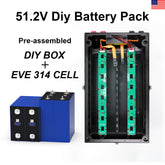

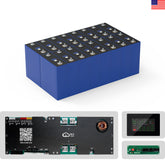

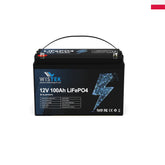
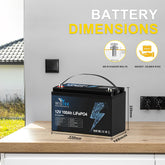
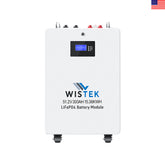
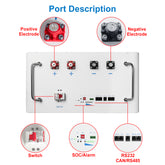
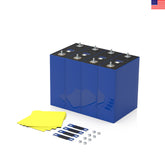
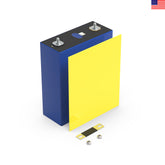
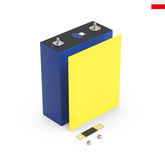

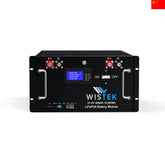
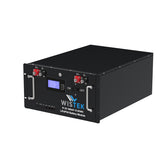
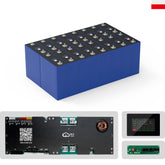








Leave a comment
All blog comments are checked prior to publishing